In the spirit of the sesquicentennial anniversary of the heritage hamlet’s Holy Cross Oratory, old and young residents discuss the past, present and future of the close-knit community in Mazgaon
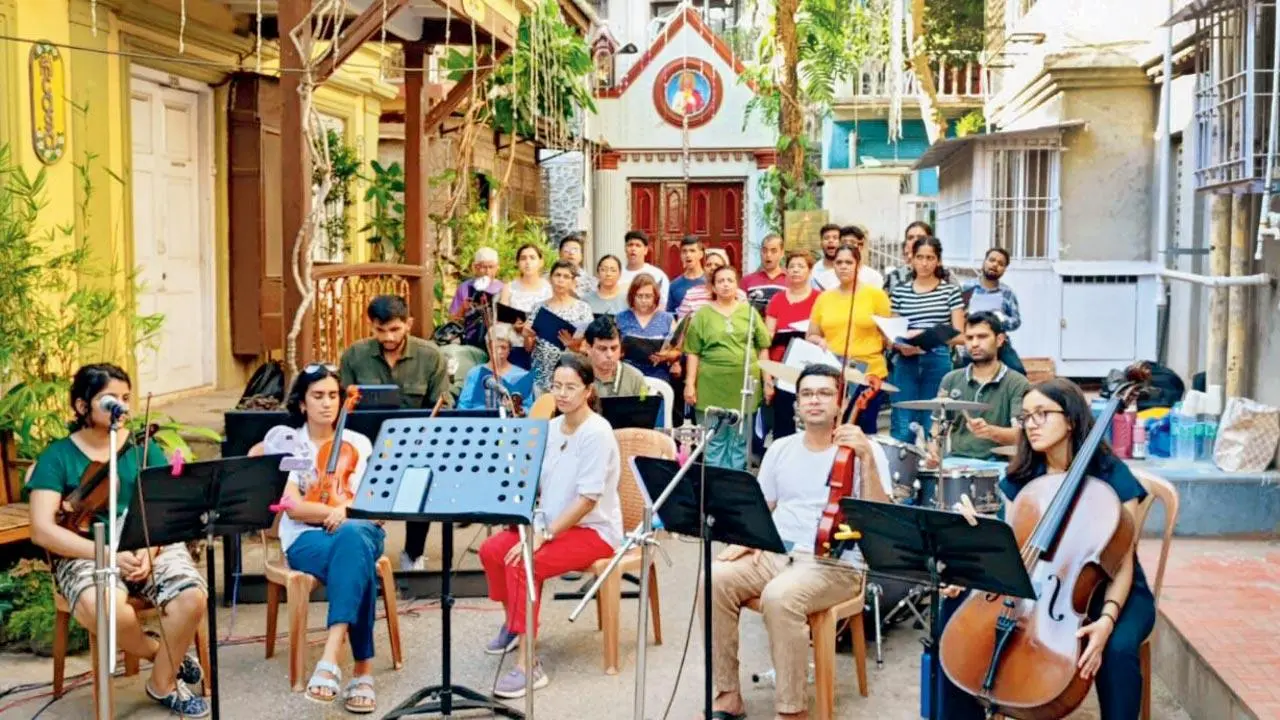
The choir rehearses outside the Oratory. Pics Courtesy/Stanislaus Baptista
The first of many sounds we hear on a scorching afternoon in Matharpacady is resident Roydon Gonsalves’s jazz ringtone. “Everybody seems to have the same ringer nowadays. When a phone rings, you must at least know it’s yours, no? This one stands out,” he smiles. It’s serendipitous that we’re in a nearly 400-year-old heritage village, dotted by homes dating back to the 1800s, splashed in bright blue, yellow and green hues. They stand apart, quite effortlessly to say the least, in the evolving Mazgaon neighbourhood.
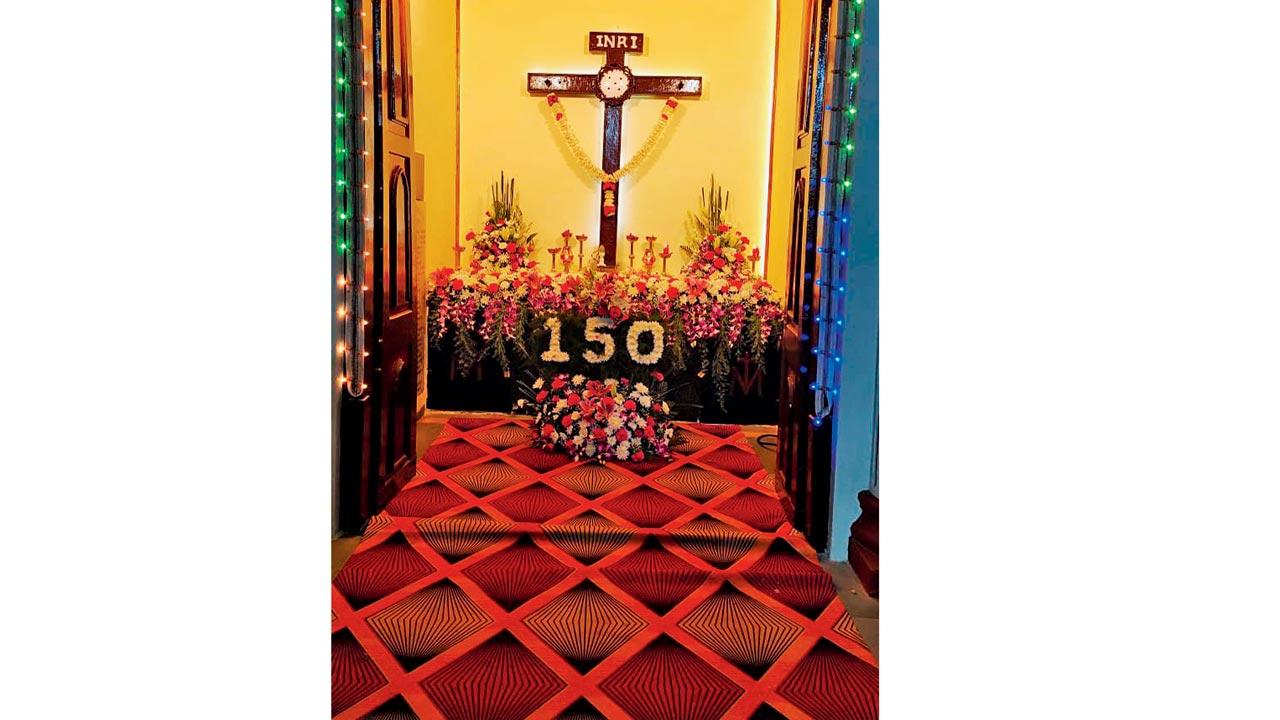 The Holy Cross Oratory is decked with celebratory flowers
The Holy Cross Oratory is decked with celebratory flowers
Earlier this week we had visited the village on the eve of the 150th year anniversary celebrations of the 1875-established Holy Cross Oratory, a cornerstone in many ways for the village’s predominantly Catholic community. During our walk, it’s not just Gonsalves whose phone can’t seem to catch a break. In Matharpacady, the residents are the planners, co-ordinators, the ushers — one for all, all for one. Listed as a heritage precinct by the Heritage Conservation Society, nearly 400 residents and visitors converged outside its oratory for the annual feast on May 1.
 The Baptista House was built in the 1880s. Pics/Sayyed Sameer Abedi
The Baptista House was built in the 1880s. Pics/Sayyed Sameer Abedi
“Do you know what Matharpacady means?” Gonsalves riddles us. Do we? Do you? “Many believe the portmanteau comes from Mahatara (elder) and Pakhadi (village). I don’t buy it,” he shrugs, as he walks us to a vantage point. The winding path takes us through an alley undergoing renovation in a bright purple hue. It’s refreshing to see colours in this city, we point out. “As long as we can keep the builders at bay. Fortunately, even the best of them have a weakness — keeping track of their promises,” the resident laughs. At the elevated viewpoint now, he reminds us that the Pakhadi sits atop the Maatha (head) of Mazgaon.
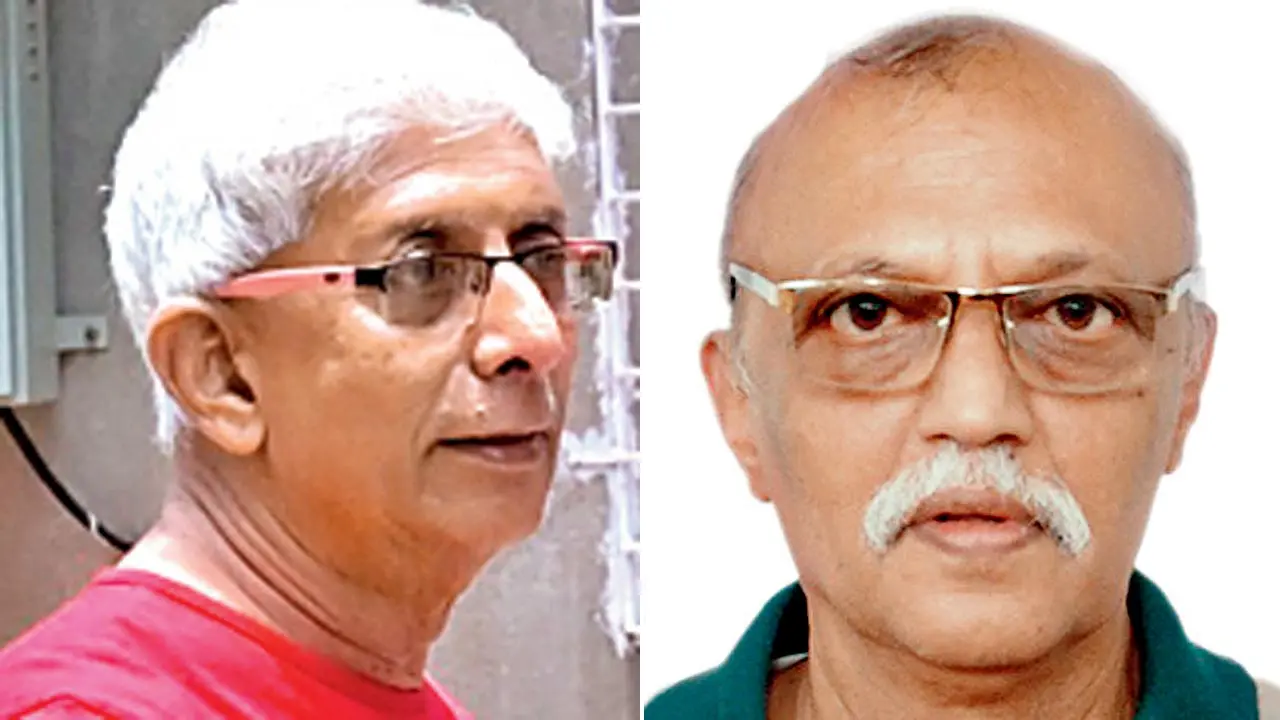 Roydon Gonsalves and Stanislaus Baptista
Roydon Gonsalves and Stanislaus Baptista
This explosion of colours and melting pot of artistic styles encompassing European sensibilities, Goan influences and Koli hints, is possibly what drew creative minds like Mario Miranda, Behram Contractor and the D’Cunha brothers to its lanes. Or perhaps there was more. “We had some excellent speakeasies around here. Pinto’s Bar and Auntie’s Bar were favourites. These became hubs for artists and journalists who would camp here for hours at end,” the resident recalls fondly.
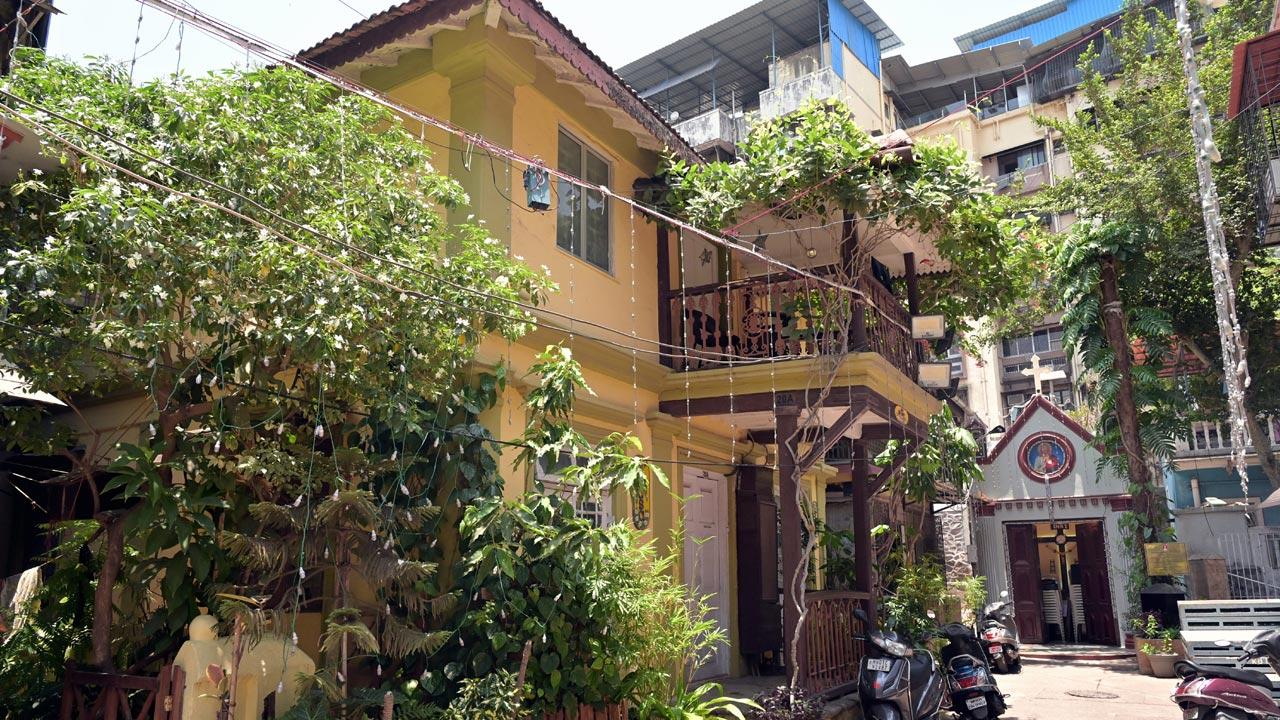 A view of Mi Casa with the Oratory in the background
A view of Mi Casa with the Oratory in the background
But notable figures weren’t just mere visitors to this heritage village. Joseph ‘Kaka’ Baptista, who quietly gave the Home Rule Movement direction with his more vocal counterpart; Bal Gangadhar Tilak, was born here in 1864. If you ask around, you can still find the erstwhile residence of Dr Ubaldo Mascarenhas, who served as the 19th Mayor of Bombay from 1948 to 1949; although it doesn’t stand in perfect shape.
For now, Stanislaus Baptista, who writes the online Matharpacady Village blog with Gonsalves, is happy that the BMC has given the concrete path outside the house a good rinse before the feast. A stream of water now flows through the alleys, symbolically connecting D’Silva House, Baptista House, Fancy Manzil and Mi Casa. Among these peculiarly titled homes is a grey two-storeyed building that Baptista believes is a sign of the times. He pulls out his phone to show us a dated picture of a humble tiled-roof home that once stood in its place until three years ago.
With the writings on the wall, the village turns to its young residents to hold the fort. The kicker — there aren’t many. Rochelle Baptista, now in her 30s, remembers the distinct echo of indistinct chatter that would fill the lanes come summer. “We would bring out our badminton racquets and play on for hours. You’d never see these alleys empty,” she remembers. Her toddler Asher, now has only six friends in the village to call out to play.
But in a village that survived the 1896 Plague and the COVID-19 pandemic without major casualties, hope is never in deficit. At the feast, Rochelle harmonised with musicians from the village in a choir performance joined by musicians from across Mumbai. “We’re trying our best to keep the community together through cultural programming. The attendance is still only a fraction of what we were used to, but it’s a good start,” she assures us.
There is some precedent to Rochelle’s chosen path. Gonsalves remembers how harmonies would once emanate from balconies of these homes every Sunday morning, thanks to ingenious musicians like Joseph Azavedo and the The Carvelles, the village’s own Beatles. Conductor of the Melita Plectrum Orchestra, Azavedo’s more intriguing musical experiments include transforming a carpenter’s saw into a musical instrument. Picked up by musicians Lt Cdr Eric Lopes and Ian Lopes alongside Dagmar Lopes, the collective went on to build a wide repertoire of Italian classical music.
Anil Dias, a young sports journalist who sees us off on our way back, sums up why most stories we hear here begin with a ‘once upon a time’. “Most of the homeowners, well into their 70s, have no one after them here. Their children have migrated overseas or to gaothans in north Mumbai. Soon, they will have no option but to sell,” he says. As we brace ourselves to disappear into the shadows of tall grey buildings waiting outside, we spot Stanislaus, now in unassuming attire, quietly scrubbing away on a spot in his 1880s bungalow. He’s clearly not buying this selling idea any time soon.
Log on to matharpacadyvillage.com
1875
year Holy Cross Oratory was established in Matharpacady
Memories from Matharpacady
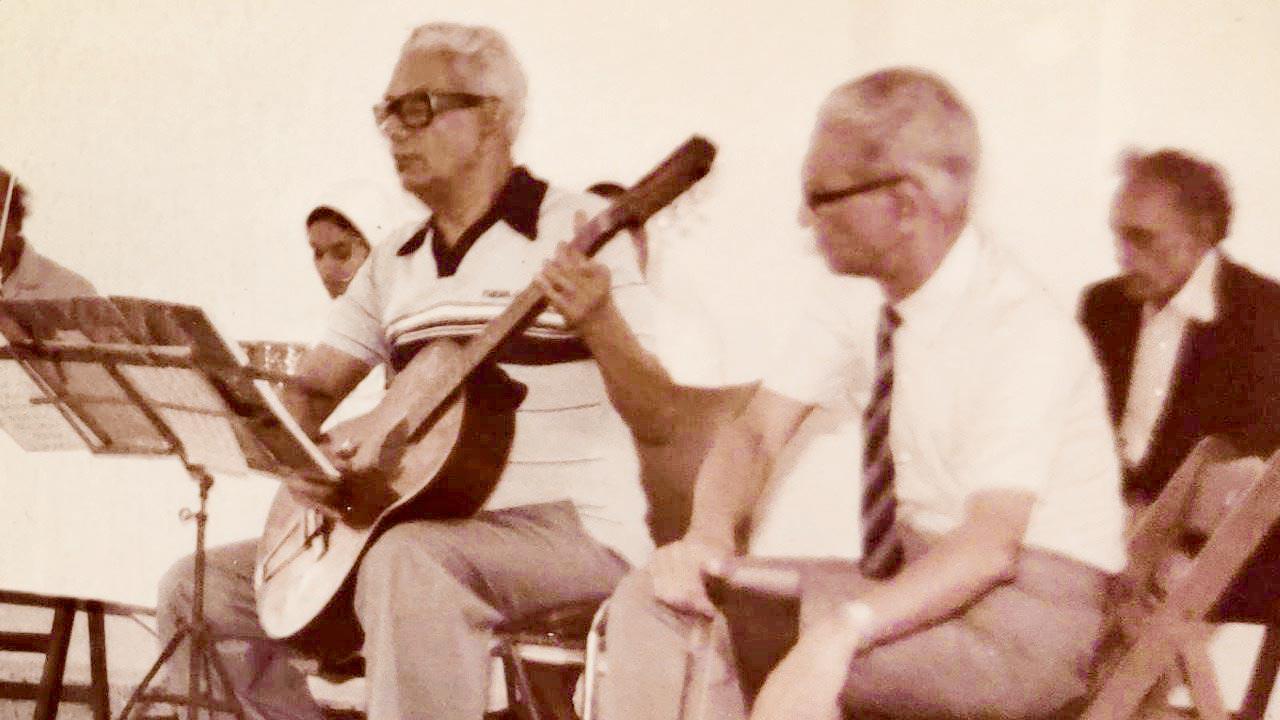
The Lopes brothers in performance
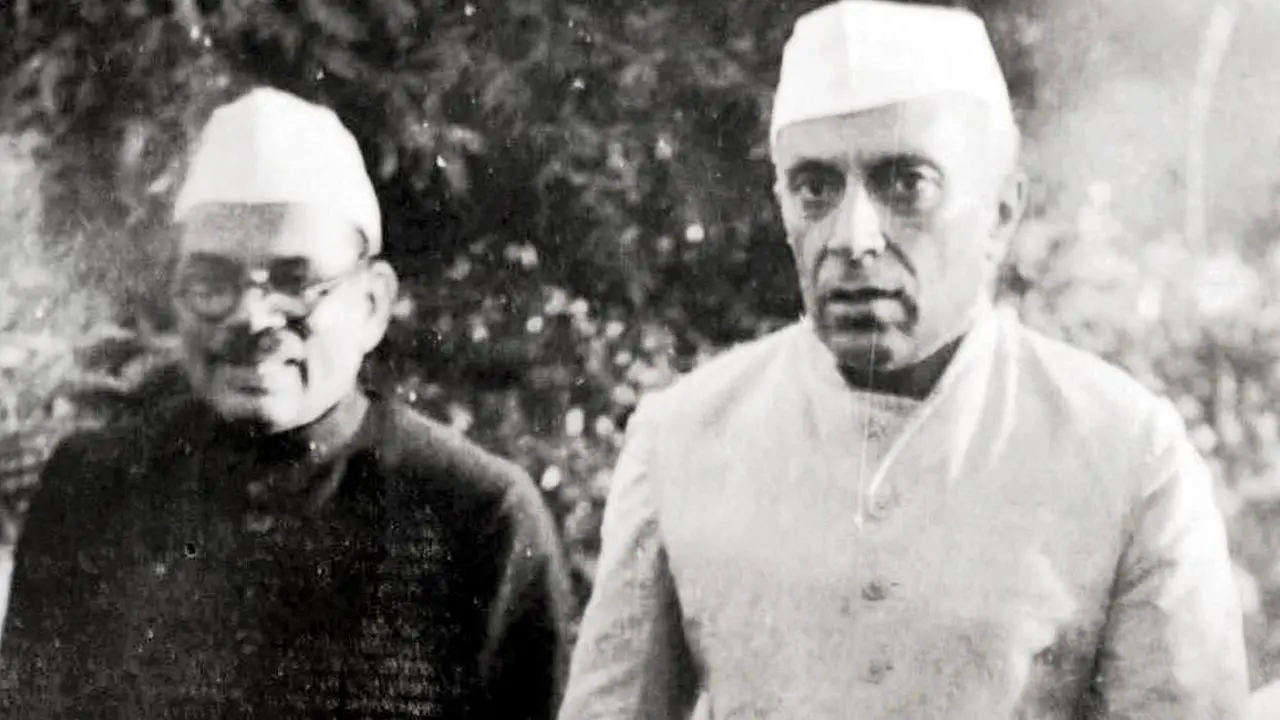
Dr Ubaldo Mascarenhas with Pandit Jawaharlal Nehru
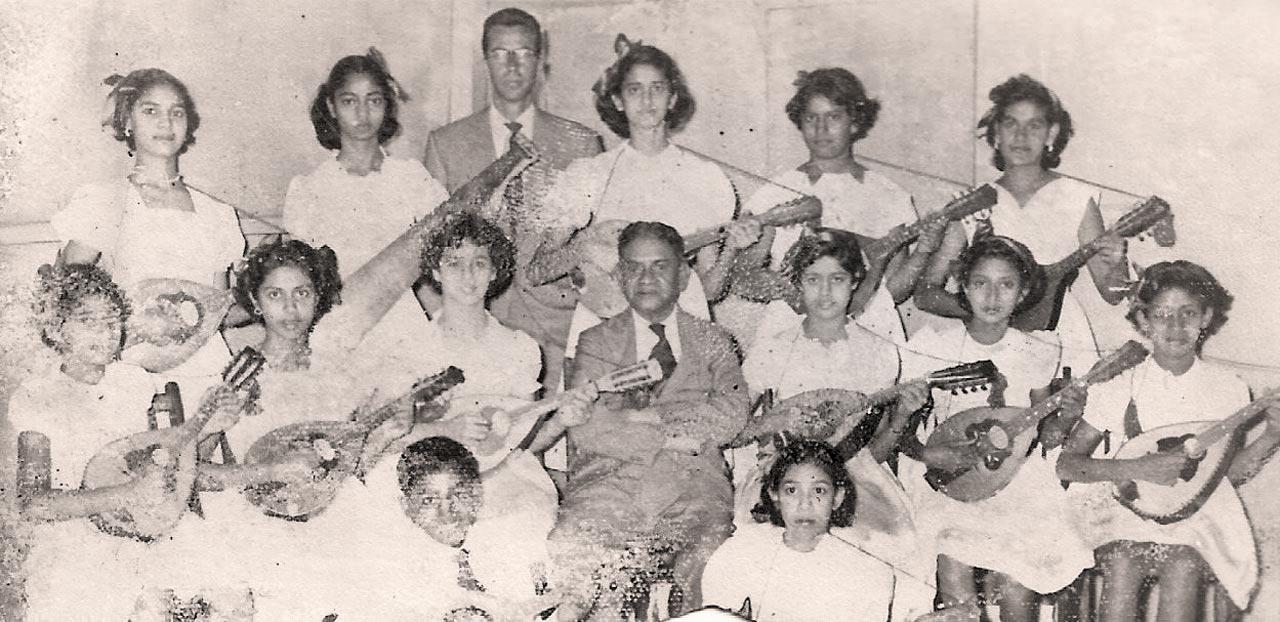
The Melita Plectrum Orchestra. Dagmar Lopes (second from left, top row) is seen holding the saw-derived musical instrument
 Subscribe today by clicking the link and stay updated with the latest news!" Click here!
Subscribe today by clicking the link and stay updated with the latest news!" Click here!








